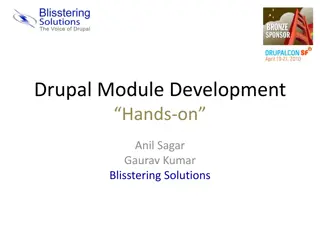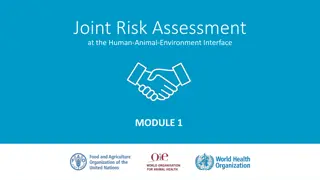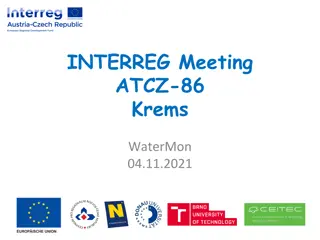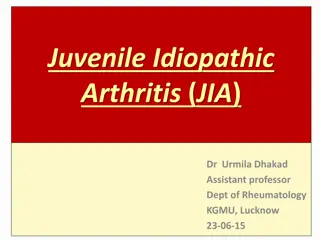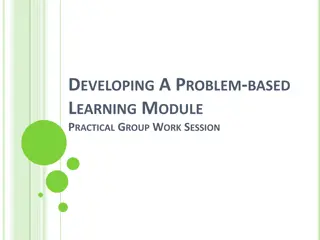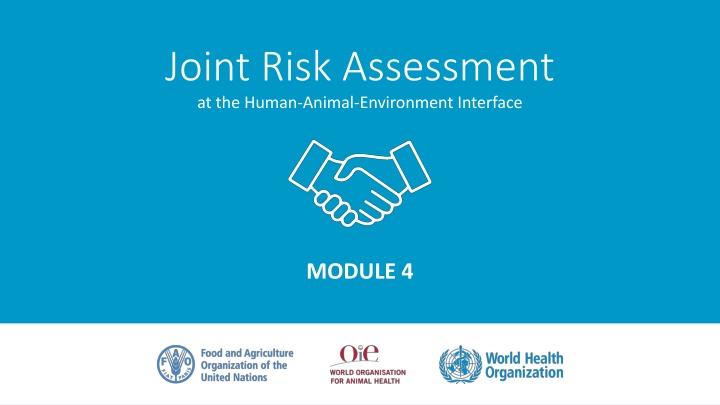
Joint Risk Assessment at the Human-Animal-Environment Interface Module 4
Explore Module 4 of the Joint Risk Assessment at the Human-Animal-Environment Interface, covering roles, responsibilities, risk management options, communication messages, documentation, stakeholder communication, and planning for future steps. Utilize evidence-based recommendations and prioritize feasible options to ensure effective risk management outcomes. Inform stakeholders and engage in operationalizing JRA results for continuous hazard assessment and emergency response readiness.
Download Presentation

Please find below an Image/Link to download the presentation.
The content on the website is provided AS IS for your information and personal use only. It may not be sold, licensed, or shared on other websites without obtaining consent from the author. If you encounter any issues during the download, it is possible that the publisher has removed the file from their server.
You are allowed to download the files provided on this website for personal or commercial use, subject to the condition that they are used lawfully. All files are the property of their respective owners.
The content on the website is provided AS IS for your information and personal use only. It may not be sold, licensed, or shared on other websites without obtaining consent from the author.
E N D
Presentation Transcript
Joint Risk Assessment at the Human-Animal-Environment Interface MODULE 4
JRA modules & steps You are here 3
Roles & responsibilities Module 4 4
Annex F, Annex F, p. 64 p. 64- -70 70 5
Step 9: Risk management options & communication messages JRA OT, p. 48 Use evidence from the risk assessment to propose risk management and communications options for consideration Identify and document options in the final report template Describe evidence-base and technically justify recommendations with pros and cons Prioritise options based on feasibility (time required, technical and financial resourcing, political will) Note: If representatives from the steering committee are unable to attend the final workshop day, the JRA lead shares documented options with them Completed by the JRA technical team 6
Step 10: Document the Assessment JRA OT, p. 49 Completed by the JRA technical team 7
Informing JRA stakeholders Now that recommendations are recorded, the JRA lead and steering committee communicate with the stakeholder group. This ensures they are informed of risk management options and can be involved in implementation. 8
Informing JRA stakeholders JRA OT, p. 51 Remember, the more specific and actionable the recommendations, the more likely that the JRA Steering Committee and Stakeholder Group can operationalise JRA results. 9
Planning for next steps Congratulations! You finished the 10-step JRA method. Now use the JRA system to repeat JRAs as needed for existing hazards or mobilize quickly in an emergency. Be sure to inform the JRA lead and steering committee about how you see the JRA being used in the future. 10
Thank you! More information on the TZG project OIE webpage: www.oie.int/en/for-the-media/onehealth/controlling-health-risks/national-collaboration/ WHO webpage: www.who.int/initiatives/tripartite-zoonosis-guide FAO webpage: www.fao.org/animal-health/en/









